by Michael T. Tracy
Housed in the archives of the Royal Botanic Garden Edinburgh (RBGE) is the collection of John Hutton Balfour papers which include numerous correspondences of the anatomist Professor John Goodsir (1814-1867) and his siblings Joseph and Jane. The twenty-seven letters bound into Hutton Balfour’s volumes of correspondence are remarkable for revealing certain unknown information about the Goodsir family.
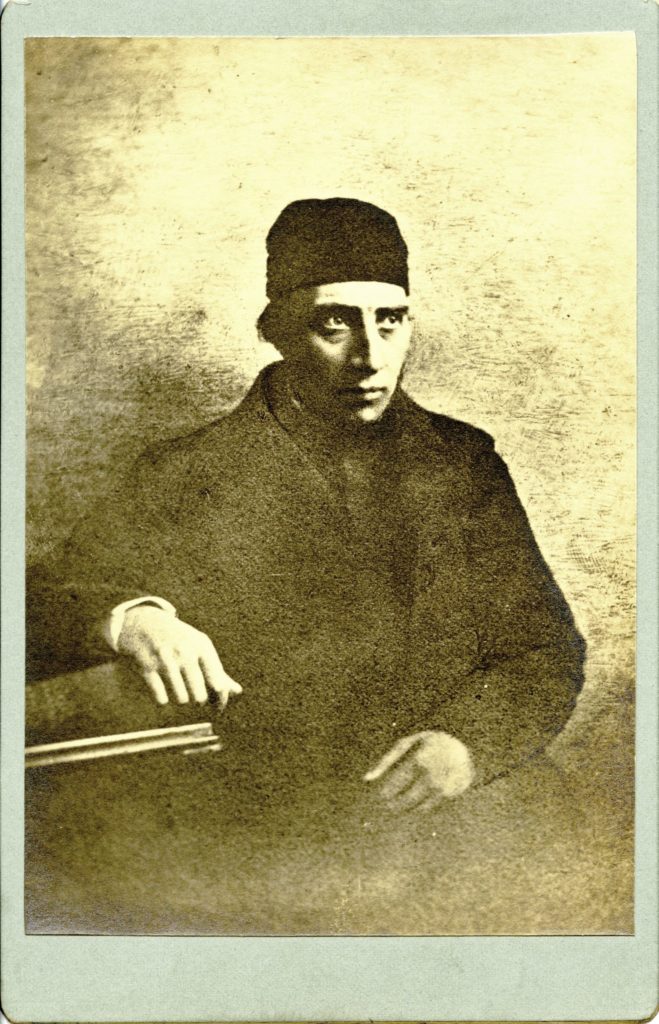
The Scottish botanist, Professor John Hutton Balfour (1808-1884) had a lifetime of botanical achievements which is well documented, especially the fact that he was Professor of Botany at the University of Edinburgh and Regius Keeper at the Royal Botanic Garden Edinburgh between 1845 and 1879. During his life, Balfour published extensively, including several botanical textbooks and manuals. He had been a close friend of the Goodsir family dating back to their youthful student days at the University of Edinburgh and was also, with Goodsir, a member of Edward Forbes’s Universal Brotherhood of the Friends of Truth, a society dedicated to ‘Wine, Love and Learning’.
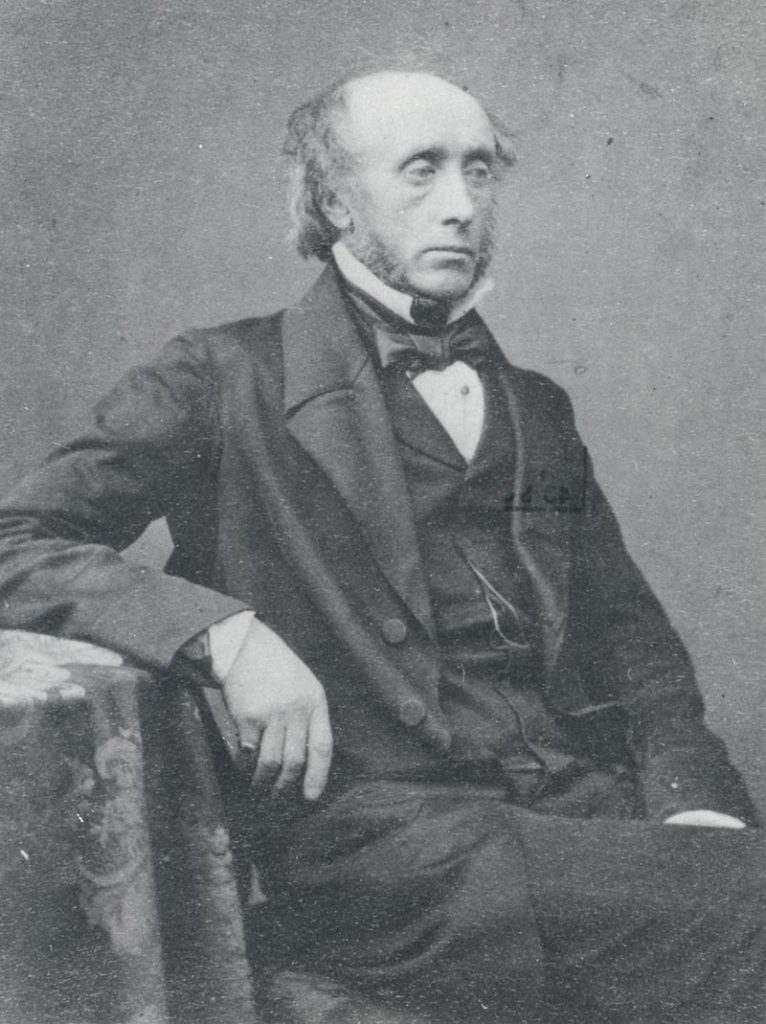
Decades later, when both John Goodsir and Balfour were Professors at the University of Edinburgh, Balfour recounted a story of Goodsir’s days at 21 Lothian Street stating, “Goodsir used often sit it beside me while I was dissecting for him, and frequently let out fragments of his early days. One day, the company in Lothian Street had invited a guest or two to dinner. Just before the hour, Goodsir thought he would look into the kitchen to see what the old housekeeper was about. ‘To my horror,’ he said, ‘there I found Jacko the monkey sitting in the potato pot enveloped in steam.”
On the death of Professor Edward Forbes in 1854, Balfour wrote a detailed and compassionate biography of his friend which was published in The Annals and Magazine of Natural History (1855) in which Balfour revealed John Goodsir’s innermost thoughts on Forbes, writing “possessed of such comprehensive intellectual sympathies, Professor Edward Forbes has always been considered by his friends in Edinburgh and other places as the co-ordinating spirit of his circle; and his return as Professor of Natural History was considered by all who knew him as a guarantee of the steady progress of his favourite science in the metropolis of Scotland. But, alas! though inscrutable and painful to us, he has been cut off. Nevertheless, it may be, that short comparatively though his career has been, he has already, in his writings and in his influences on his friends and pupils, left behind him such germs of thought as shall hereafter develop themselves in the advancing science of the period, and so secure for our departed friend that full measure of scientific results which he ever longed after, not out of vain glory, for no man could be more free from such a feeling, but for the good of mankind and the glory of God.” Shortly after the burial of Forbes at Dean Cemetery, John Goodsir wrote Balfour, “My dear Balfour, the age on the coffin was on my authority; for Mrs Forbes only knew his birth date with certainty. He was born on the 13th February 1815. Yours sincerely, John Goodsir.”
The Hutton Balfour correspondence collection at the Royal Botanic Garden Edinburgh
There are 27 letters from members of the Goodsir family to John Hutton Balfour in Hutton Balfour’s collection of bound correspondence which is numbered alphabetically and chronologically giving the Goodsir letters the codes G34 to G60. I will now identify and discuss the most significant of these letters.
G36 is a letter from John Goodsir to Hutton Balfour asking Borrowman, presumably an accountant (there is a John Borrowman, accountant on page 40 of the Post-Office Edinburgh and Leith Directory, 1866-1867 ) to release various monies for the Anatomical Museum of the University. In this letter, dated 7 August 1848, Goodsir requests 100 pounds.
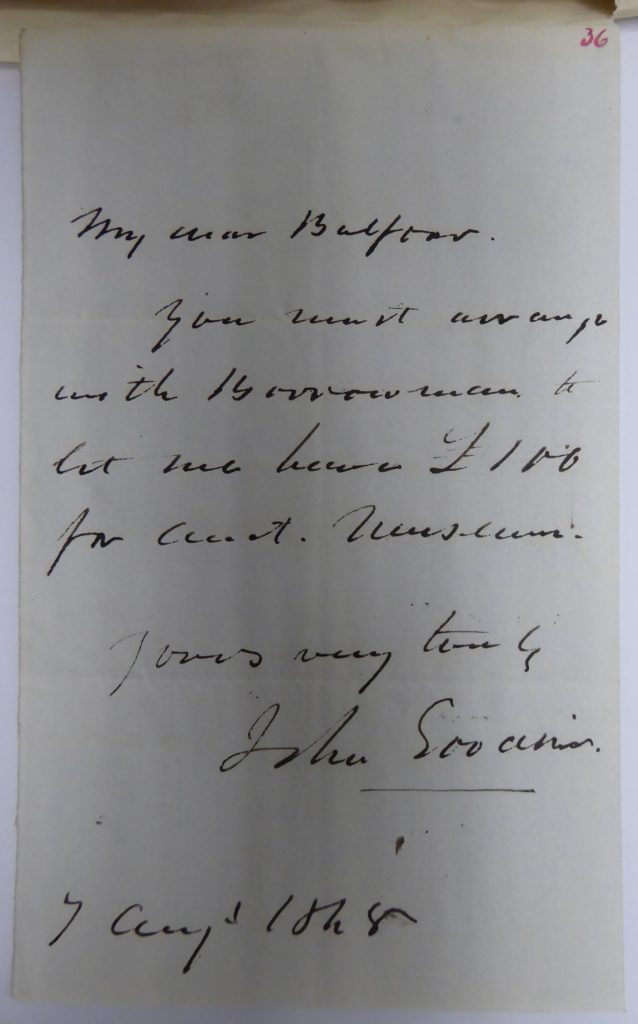
G43 is a letter dated 20 November 1858 in which Goodsir outlines his opinions about natural science, writing to Balfour that “It is highly important that natural science should be represented in our Scottish Metropolitan Museum not only from a Geological and Zoological, but also from a Physiological point of view. While Comparative Anatomy is intimately related and absolutely essential to Zoology on the one hand, and to Geology on the other, it is, nevertheless an independent member of the group of natural sciences, and is moreover that member of the group which comes most extensively and intimately into relation with medical science.”
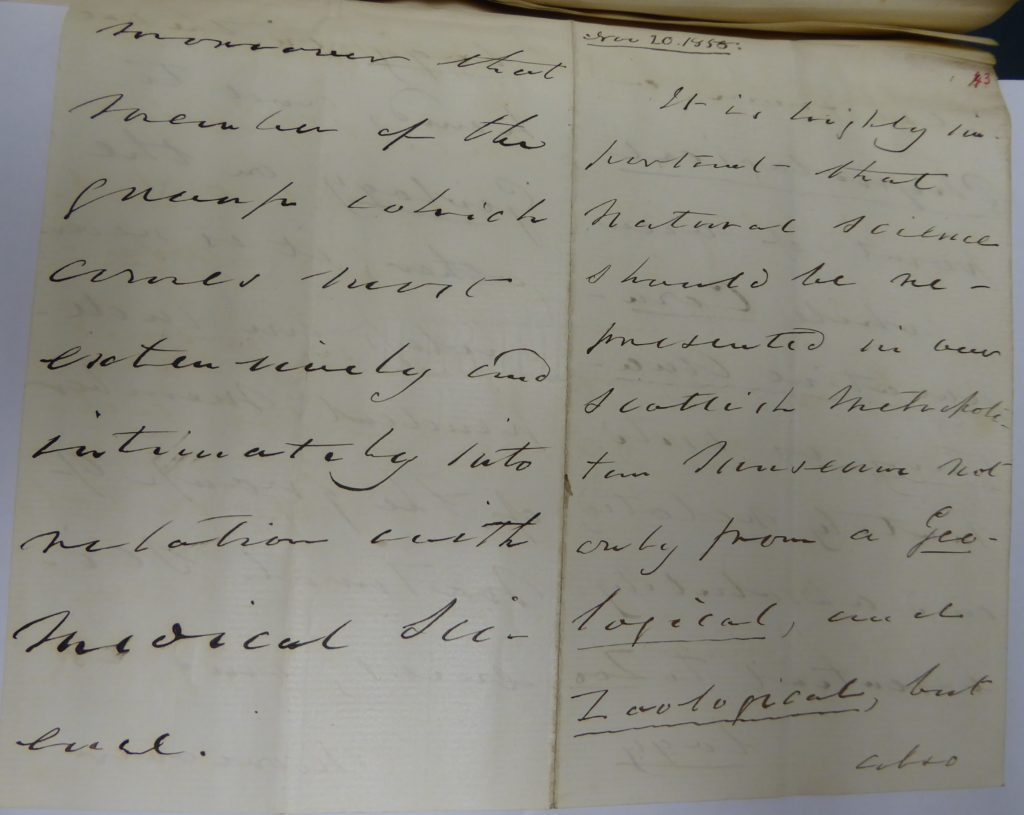
Goodsir, when requested would review and comment on various impending works and articles, and on at least one occasion he did so for Balfour; in letter G45 dated 9 August 1860, he states that “I have gone over ‘The Links of Creation,’ and I am of [the] opinion that it is somewhat too sketchy in its style for your journal.” ‘Links of Creation’ was eventually published as ‘Plants of the Bible’ in 1857.
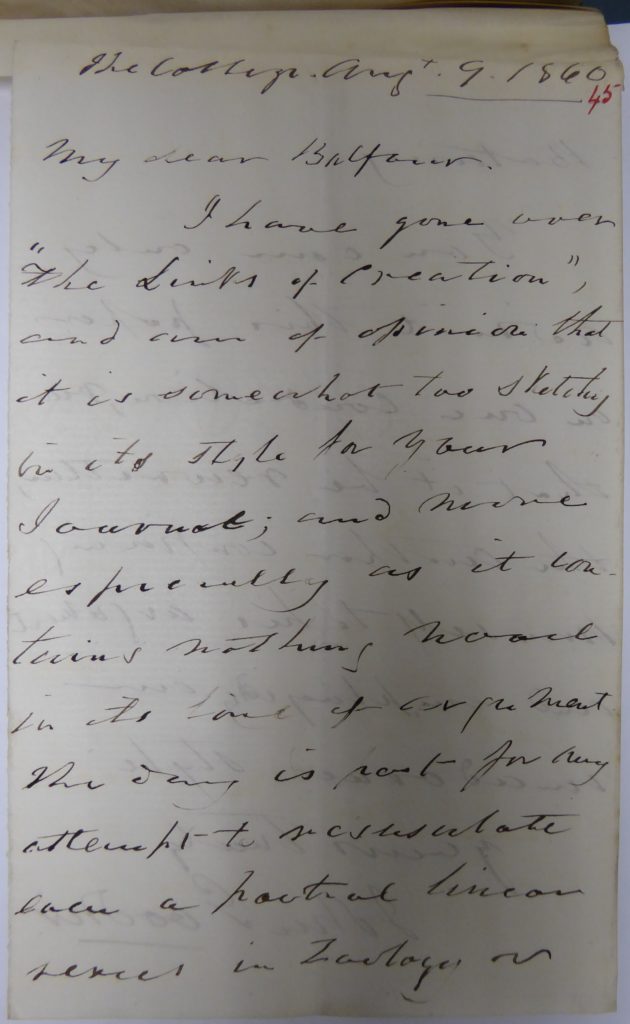
G46: Goodsir and Balfour corresponded on one particular teacher of German, Dr. Nachot, whom Goodsir had personally known “for many years” and has “done more as a teacher than … any of his fellow labourers.” He was hoping to sit as an examiner or assessor in German for the Medical Curriculum and Goodsir is recommending him for that post.
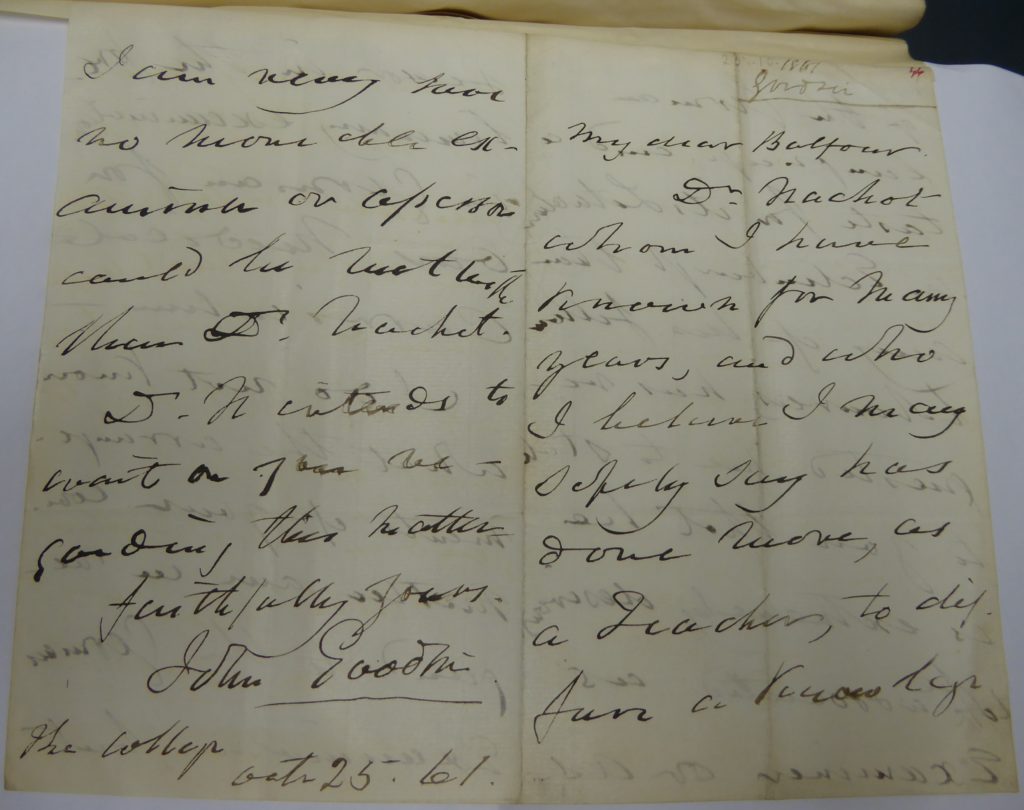
Some of the correspondences in the Balfour Collection discuss various new publications. In letter G47, Goodsir discusses a paper by a Dr. Doherty in which Goodsir wrote, “Dr. Doherty’s paper is very ingenious, exhibits extended knowledge and much aptitude for philosophical analysis,” but then goes on to recommend that Balfour declines it, as it is “not quite adapted for your class of readers”.
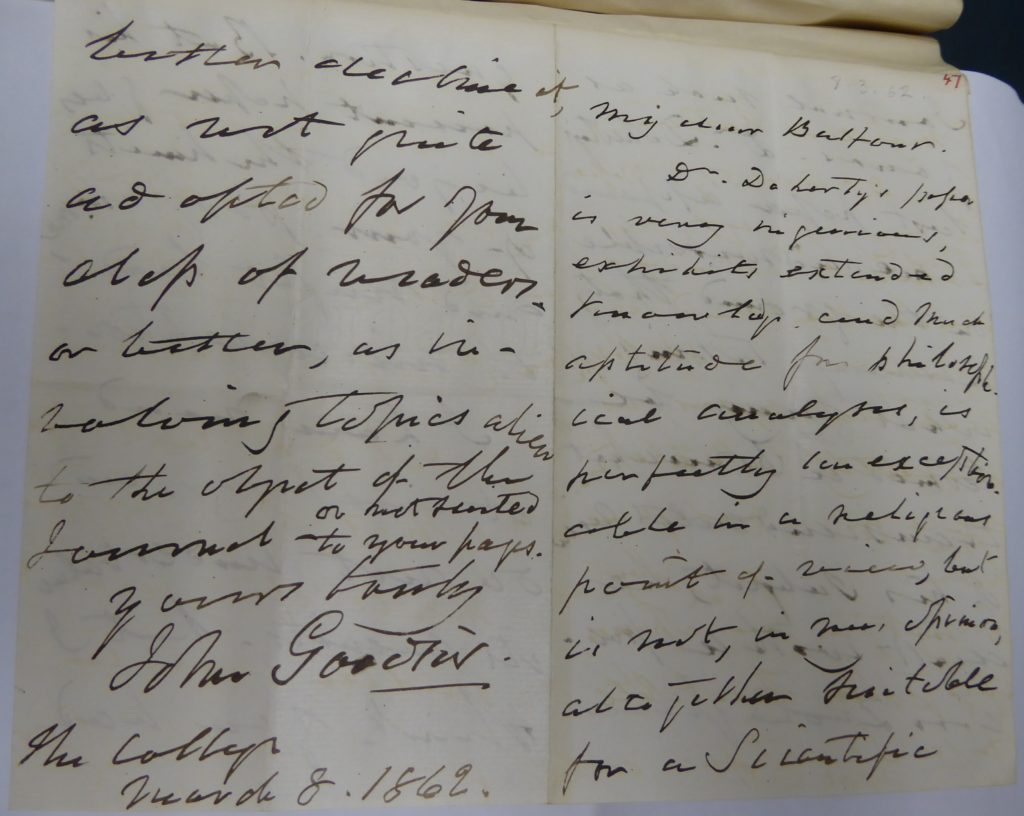
In letter G48, dated 4 February 1863, Goodsir comments on a Dr. Baxter’s “far from satisfactory” paper being “not such a communication as I would be inclined to admit into a Physiological Journal, but as matters of considerable interest are discussed in it, and as a sequel to his former communications, I think [it] may be admitted into such a journal as yours, which is not confined to special topics”. Another paper by someone named Ponton is dismissed outright as “not suitable for the Royal Society. It could neither appear in the Transactions nor the Proceedings [presumably of the Botanical Society of Edinburgh] – He quotes no authorities, and his references to facts are so … vague”.
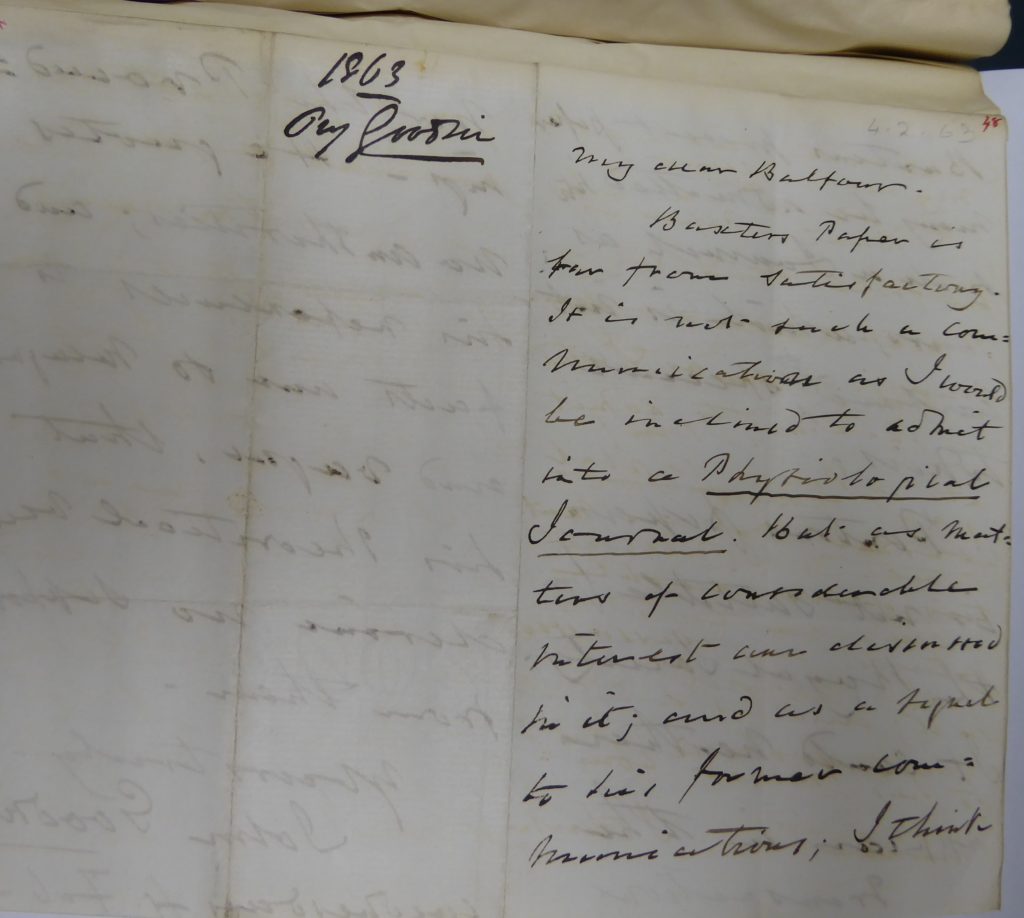
Looking at letter G49 dated July 1863 [though there also seems to be a date of 1866(?) on it], is Balfour is filling in for Goodsir’s examination for his Anatomy class during the Summer Session, leading Goodsir to write out some of the exam questions for him?
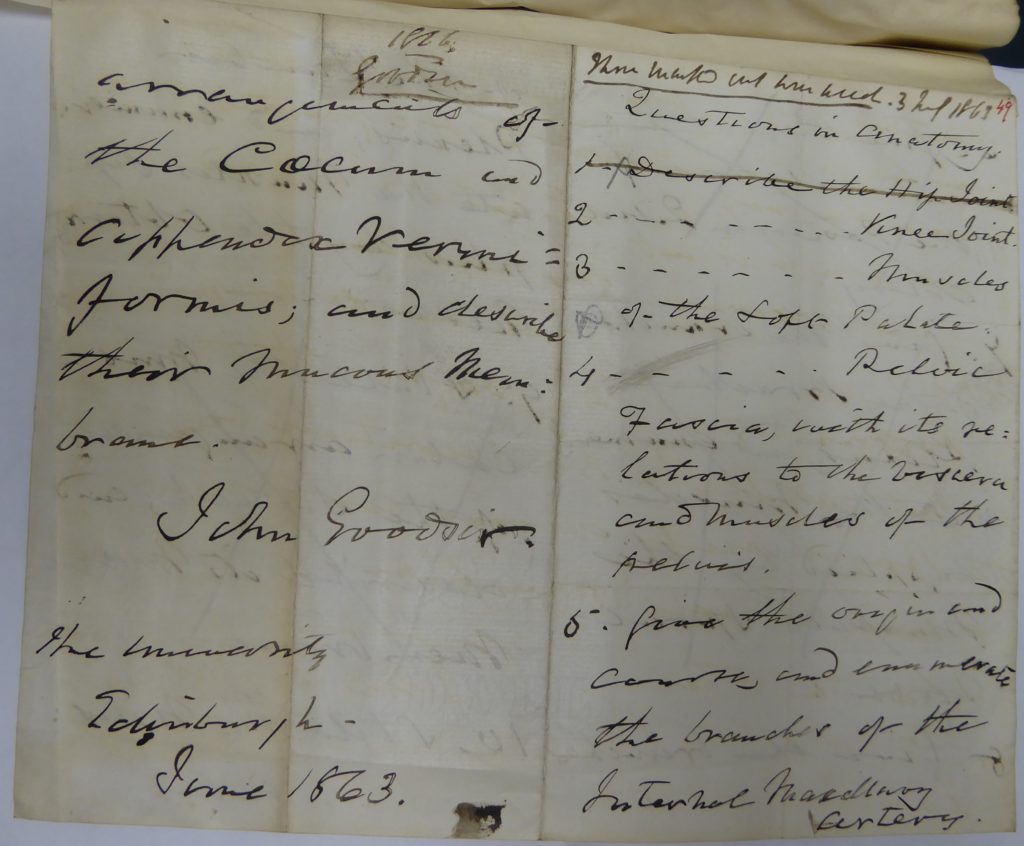
G39 is a letter of particular note and is from John Goodsir to the pioneering surgeon Professor James Syme. It is most revealing for the simple reason it is the only known surviving letter in which Goodsir wrote about the medical condition he was increasingly suffering from writing, “You will be enabled to judge of my case when I inform you that my symptoms are those of incipient affection of the spinal cord, on both sides, but especially on the right side of the lumbar, and in the slightest degree, also, on the left side of the brachial region. The opinion of my medical friends here is, that the duration and character of the case indicated merely engorgement of the pia-matral venous plexus, with slight serous effusion. The opinion is corroborated by the venous engorgement (now much administered) in my legs, and partially in my hands. I, myself, however, am fully aware of the extreme probability of a slight softening having already taken place in the organ, and of the great rarity of reparative action, or even a stationary condition of, the afflicted parts in this disease.”
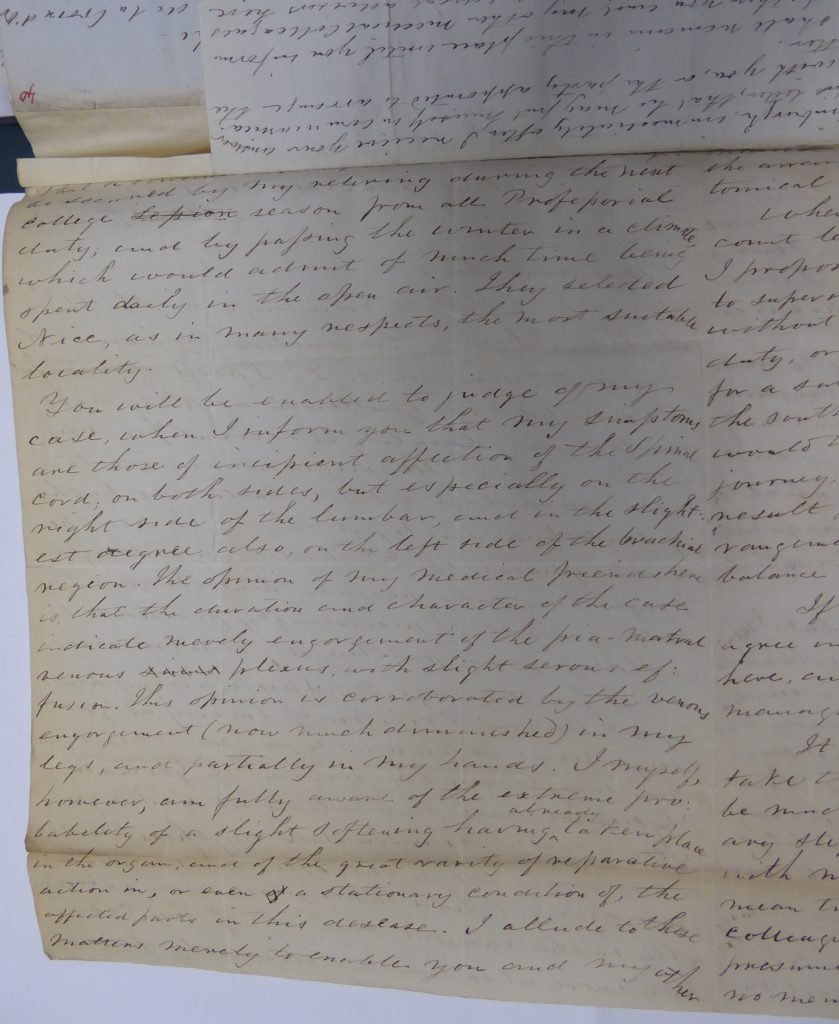
Goodsir wrote this letter from the Hotel de la Croix d’or in Karlsruhe, Germany and the significance of this letter cannot be overstated enough. The source of John Goodsir’s problem lay in his spinal cord and his medical doctors at the time did not try to describe the nature of the inflammation around the spinal cord nor its softening. Sadly, John Goodsir in this letter makes it clear that he knows that regeneration of nervous tissue is a “great rarity” – in fact it never happens. At this exact point in Goodsir’s own life, he knows, as not many people would have at the time, that his disease is progressive.
As John Goodsir’s health continued to decline, he relied on Balfour and others more frequently. While at Wardie, in letter G52 which he sent to Balfour on 30 March 1864, he wrote, “My dear Sir, On Tuesday, 22nd Inst., I had been unable for duty on three successive lecture days. I, therefore requested [by] my brother and Dr. Duncan to appraise you of my condition and to inform you that I had made arrangements with Mr. Turner to continue my course of Lectures with their usual illustrations. I have now to state that the Lectures have been conducted most satisfactorily by Mr. Turner, and that if I continue to gain ground, as I am now doing, I shall resume duty on Monday, 4th… and conduct the concluding part of the course. You will do me the favour of communicating this note to the Medical Faculty at the meeting today.”
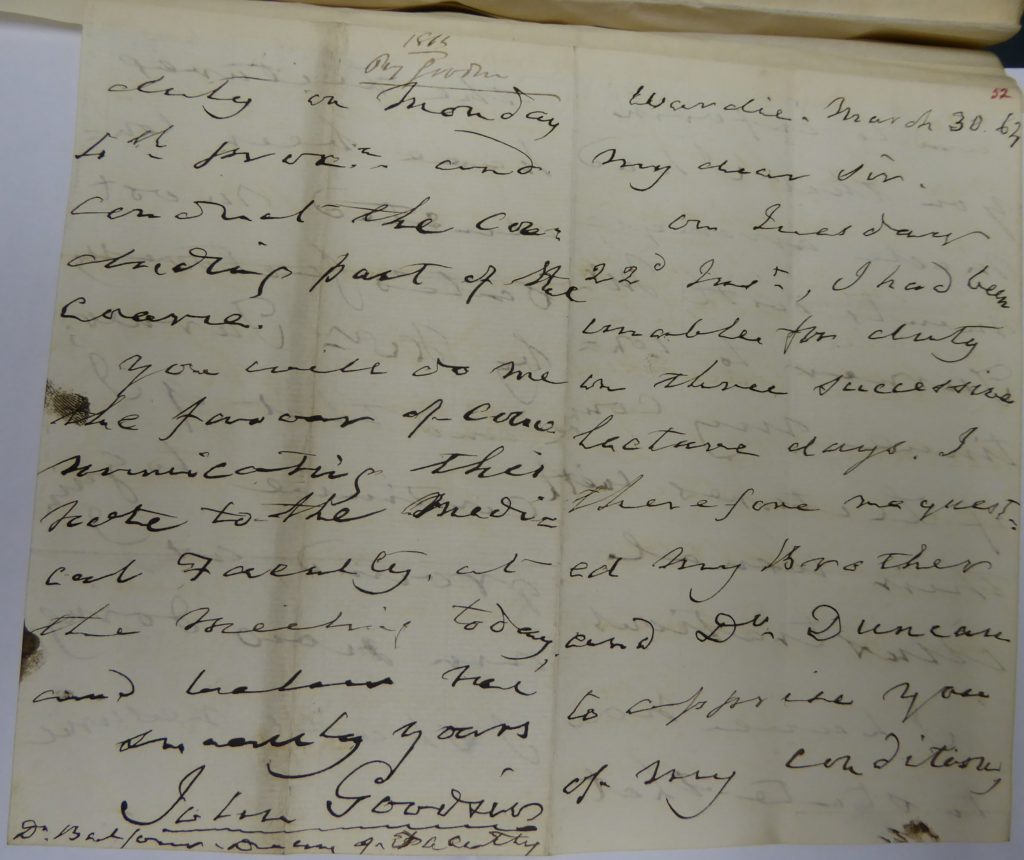
John Goodsir introduced large teaching diagrams which allowed his heavily subscribed microscopy classes to visualize the object under discussion. As we have seen in letter G52 above, Goodsir refers to the fact he uses diagrams or illustrations in his lectures. Professor Balfour soon followed suit in his botanical classroom and more than likely the two discussed this extensively. Some of the teaching diagrams that Balfour used are still in existence and are preserved in the archives of the Royal Botanic Garden Edinburgh, however, sadly, none of these teaching diagrams survive for Goodsir.
When John Goodsir died, his old friend John Hutton Balfour was one of the pallbearers who carried his coffin to Dean Cemetery. Balfour went on to eulogise Goodsir in a ten-page obituary which was subsequently published in the Transactions of the Botanical Society in 1868, covering his lifetime of achievements. In letter G58, Reverend Joseph Taylor Goodsir, in a letter of appreciation to Professor Balfour for his Obituary of John, wrote, “Accepting best thanks for your ‘Obituary Notice,’ of my brother, John. The perusal of it has afforded me sincere pleasure and gratification.”
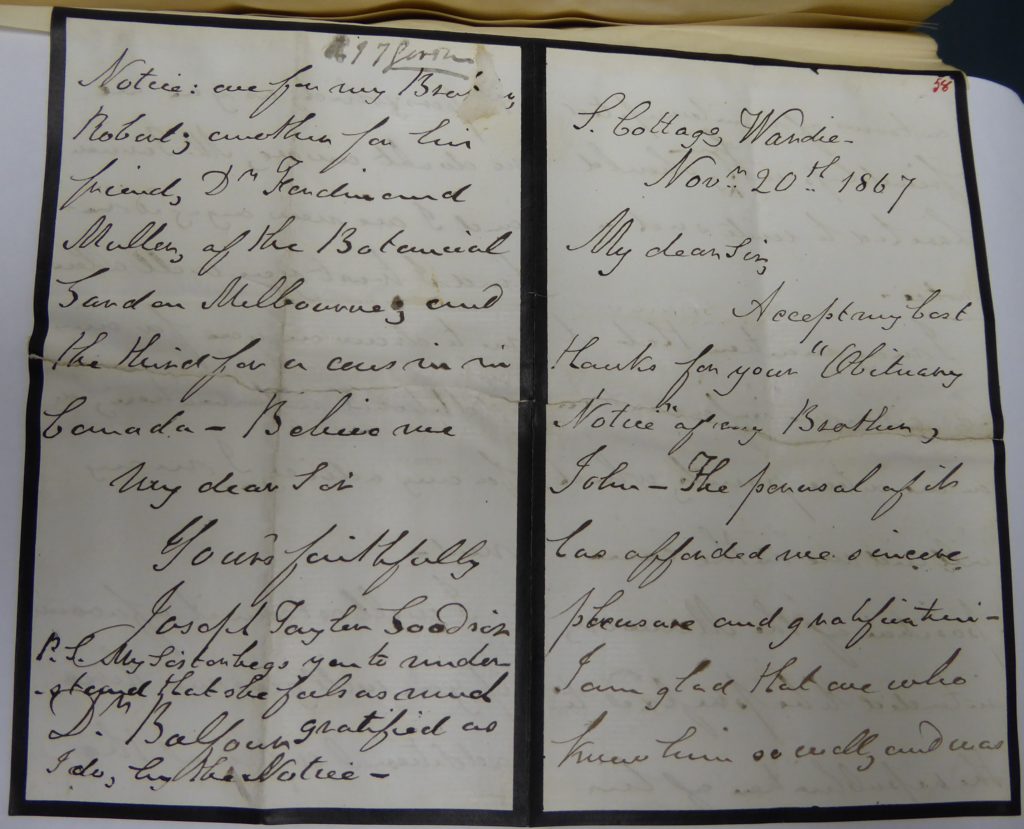
Letter G34 written by John’s sister Jane Ross Goodsir, also in writing to Balfour indicated that she had “sent three copies of your ‘Obituary’ of my dear brother to Australia,” and also revealed John’s happiness at Balfour’s last meeting with his friend, further writing, “Your last visit to John’s death bed was the last visit from any one he really enjoyed, if one could think of enjoyment in his then suffering state. I remember it so well, for I had tried to brighten him up for your reception, by making him a little neater than usual. He tried to go through the process so cheerfully on that occasion…”
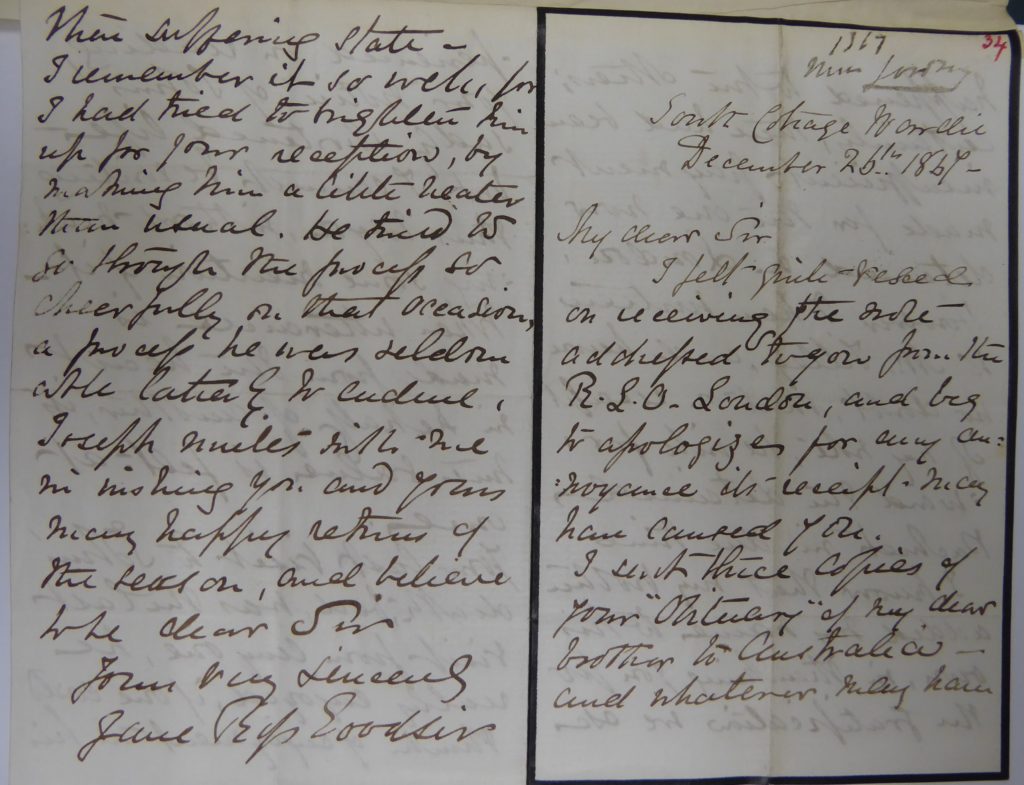
In letter G57 dated 17 March 1868, the Reverend Joseph T. Goodsir had written to Balfour about the Latin meaning of the words ex ante (based on forecasts), as he was working on the Latin dedication of his late volume to his brother. There is little doubt from these letters that Balfour provided valuable information for the two volumes of the Anatomical Memories of John Goodsir.
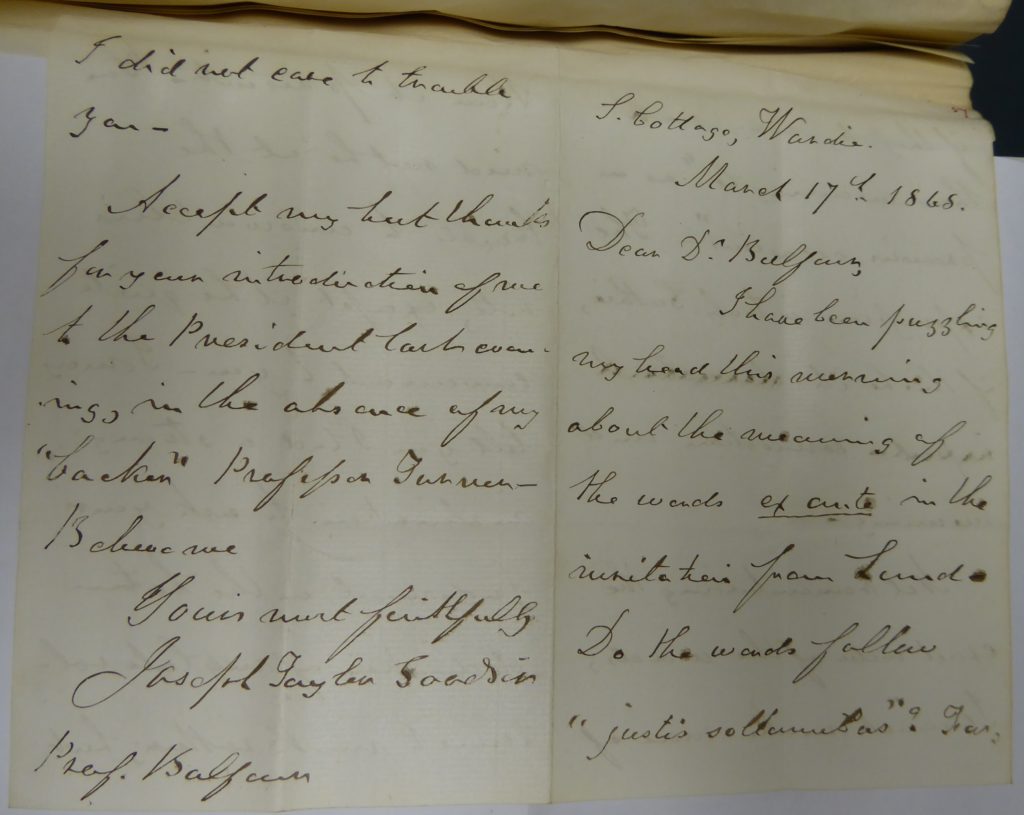
The Goodsirs’ correspondence is a wealth of information and demonstrates the deep respect and admiration each member of this family had for John Hutton Balfour. As the founder of the Edinburgh Botanical Society and an influential figure in the promotion and further understanding of botanical sciences; John Hutton Balfour’s many accomplishments can be still seen today, thanks in part to the continuing work of the Royal Botanic Garden Edinburgh and its archives. I am particularly proud of the ongoing work of the archives and my family’s association with the Garden’s Regius Keeper, the esteemed Professor of Botany of the University of Edinburgh – John Hutton Balfour.
by Michael T. Tracy with additions by Leonie Paterson, RBGE Archivist
